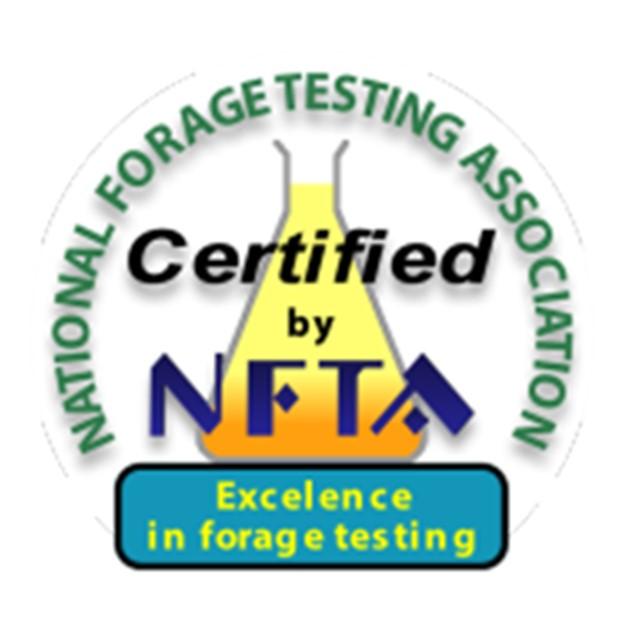Forage Quality Testing
What is Forage Quality?
Forage quality can be defined as the extent to which a forage has the potential to produce a desired animal response. The quality of a given forage encompasses multiple components including animal consumption, nutritional value, and resulting animal performance. A high-quality forage is one that will increase feed efficiency and optimize the productivity of the animal.
Why Test for Forage Quality?
Adequate animal nutrition is essential for high rates of gain, ample milk production, efficient reproduction, and adequate profits. However, not only do nutritional needs vary among and within animal species and classes, but forage quality varies greatly among and within forage crops. Forage testing provides us with useful information about the nutritional value of our pasture, hay, or silage. Analyzing forages for their nutrient content allows us to formulate animal rations, determine whether forage quality is adequate, and ensure proper ration supplementation. This means we are able to supply forage in the most efficient manner and minimize feeding costs while maximizing animal production.
Forage testing also provides a basis for commercial hay sales. Knowing the nutritional value of your forage will ensure that you are getting the right price for your hay when marketed.
How to Sample for Forage Quality
Proper sampling and handling of forage is essential for accurate results. Only a few grams of material represents many tons of forage, so it is essential to obtain a representative sample. Therefore, sampling technique is extremely important.
Sampling forage from pasture is especially challenging because the quality of the forage in a pasture is constantly changing, and selective grazing by animals will affect the quality of the diet. As a result, samples should be taken shortly before livestock are turned into a given pasture. When sampling pastures, each paddock or field should be sampled and tested separately. To ensure the samples are representative of the whole area, random samples should be collected from at least 20 different spots. Samples also need to represent what will be grazed by livestock, so try to cut the forage at the approximate grazing height and avoid collecting samples in especially weedy areas or areas that will be refused by livestock. The collected forage should be mixed, kept cool and protected from heat or direct sun, and promptly sent to a laboratory for analysis.
When sampling hay, it is important that individual hay lots are sampled and tested separately. A hay lot is defined as hay from the same field, same cutting, harvested under the same environmental conditions, and having a uniform forage composition. To accurately determine hay quality, a high-quality coring device should be used to collect a minimum of 20 cores from each hay lot. Probe the bales to a depth of 12 to 24 inches and take the cores as a cross-section of a bale (i.e. into the butt ends of square bales or the rounded side of round bales). Avoid choosing bales based on appearance and instead select random bales to ensure that samples are representative of the entire lot of hay. Core samples from a given lot should be combined into a single sample and stored in a sealed plastic freezer bag. Samples should be protected from the heat or direct sun and promptly sent to a laboratory for analysis.
Where to Send Forage Samples for Analysis?
The accuracy of a forage analysis depends on the analytical procedures used and the precision of laboratory techniques. Many different forage testing laboratories are available for testing your forages. It is recommended that you choose a lab that has been certified through the National Forage Testing Association (NFTA). Certified labs must meet the requirements of NFTA with regard to accurate forage testing. For a full, current list of NFTA certified forage testing labs or more information on proficiency testing, visit the NFTA website.
